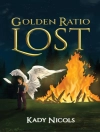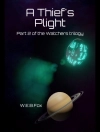In ‘Palos of the Dog Star Pack, ‘ J. U. Giesy transports readers into an enthralling science fiction narrative that melds adventure with a touch of cosmic introspection. Set against the backdrop of a distant planet, the protagonist embarks on a quest that not only explores the odyssey of the human spirit but also delves into themes of camaraderie, survival, and the intricacies of alien cultures. Giesy’s seamless blend of fanciful language and vivid imagery evokes the golden age of pulp fiction, while provoking thoughtful reflections on humanity’s place in the universe. J. U. Giesy, an author steeped in the traditions of speculative fiction, draws inspiration from both classic literary influences and the burgeoning sci-fi movement of his time. His adept storytelling and imaginative world-building reflect his passion for exploration and adventure, possibly derived from his experiences as a writer and illustrator. Giesy’s multifaceted background imbues ‘Palos of the Dog Star Pack’ with a rich tapestry that resonates with the heart of early 20th-century readers, eager for escapism and discovery. For those enthralled by tales that transcend the ordinary, Giesy’s work is not to be missed. This novel is a compelling invitation to traverse worlds unknown and experience the thrill of interstellar exploration. Whether a long-time aficionado of science fiction or a newcomer to the genre, readers will find profound connections and endless excitement in Giesy’s vividly constructed universe.
Sobre el autor
J. U. Giesy, another name in the constellation of early 20th-century science fiction writers, offered contributions that have flickered persistently, albeit modestly, in the genre’s vast sky. Best known for his work, ‘Palos of the Dog Star Pack’ (1918), Giesy utilized the planetary romance template, evident in the stories of Edgar Rice Burroughs. This subgenre combines elements of science fiction and adventure romance, often set on other planets and involving swashbuckling heroes, alien civilizations, and exotic landscapes. ‘Palos of the Dog Star Pack, ‘ which is set on the planet Palos which orbits the star Sirius, stands as an exemplar of such narrative adventure. The protagonist, Jason Croft, is a psychic voyager, prefiguring the ‘mind-travel’ trope that later became common in science fiction and fantasy literature. While Giesy may not have achieved the iconic status of some of his contemporaries, his work echoed the themes of escapism and the exploration of human potential that were prevalent in the pulp literature of his era. His narratives captured the fascination with the otherworldly, a motif that persists in modern speculative fiction. Despite his relatively limited bibliography, Giesy’s ‘Palos’ series remains a touchstone for enthusiasts of early speculative fiction, reflecting a period when science, literature, and the human imagination were forging new frontiers in storytelling.












